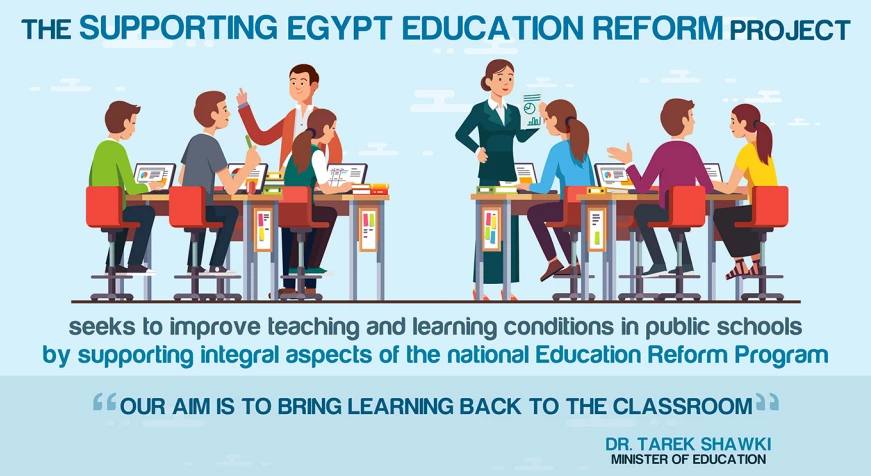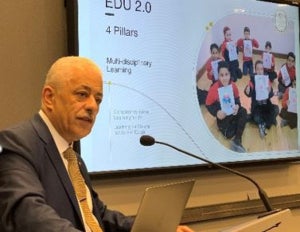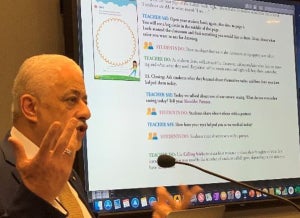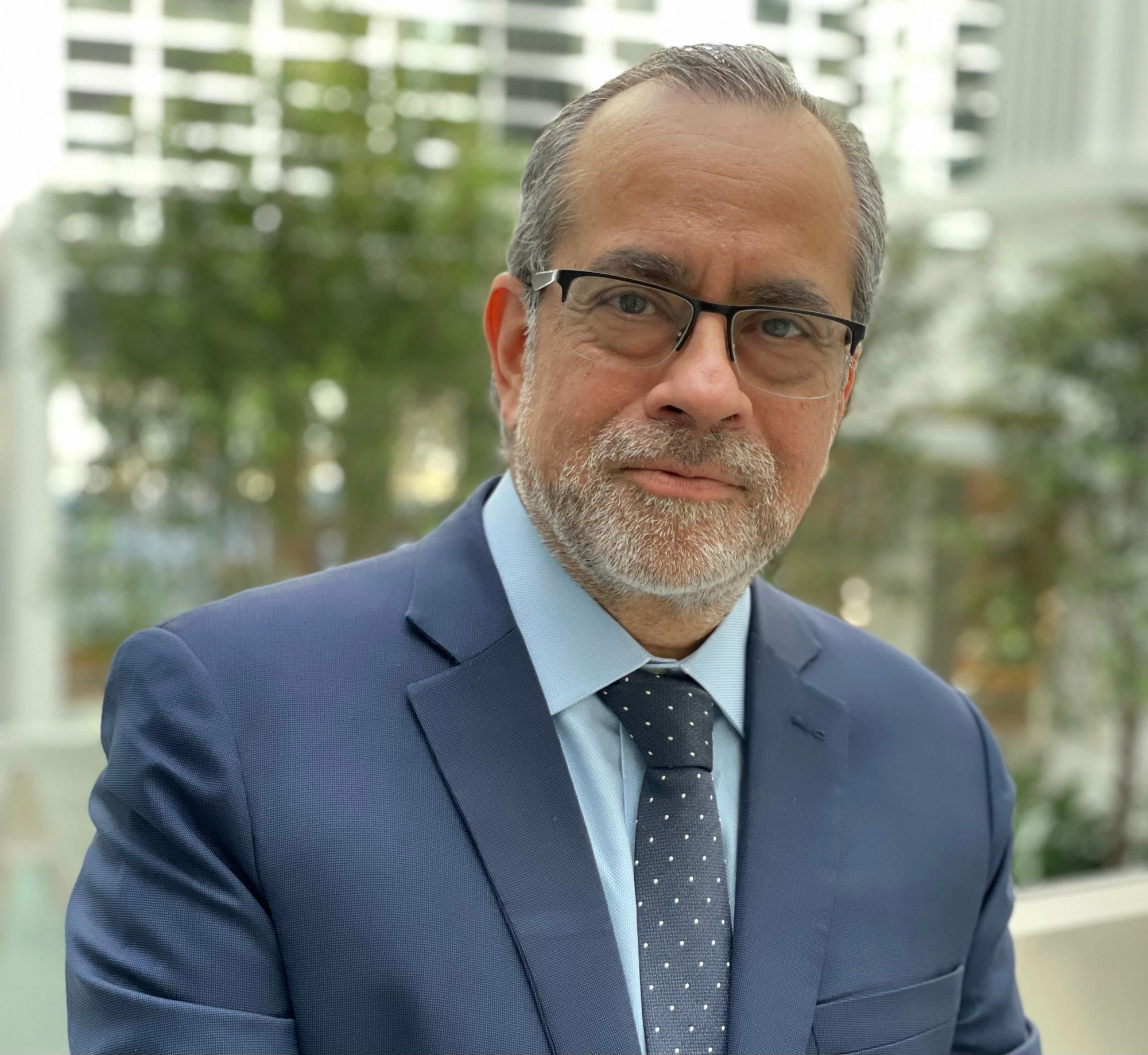We are living in a global learning crisis. More than half of children in low- and middle-income countries cannot read and understand a simple text by age ten. A few weeks ago during the World Bank Group-IMF Annual Meetings, we launched a new Learning Poverty target, meant to draw attention to this critical development challenge. To support country efforts in boosting literacy levels, we also released a Literacy Policy package in a new report, Ending Learning Poverty: What Will It Take?, outlining interventions that have proven successful in several countries and subnational entities, and have the potential to be replicated or be an input in the design of interventions in other contexts.
Successful countries, we found, invest in shifting the mindsets of all actors of the education system to focus relentlessly on learning. Improvements in the learning process require many interventions at the classroom and school level. And they are urgent because millions of children are attending schools today and children deserve a better experience today. But these interventions can only have an impact at scale if they are part of a systemic change where all relevant actors focus on the child’s experience.
World Bank hosted event: ‘’The Political
Economy of Implementing Ambitious
Education Reform’’, held at the World Bank
headquarters.
One example of a systemic shift is in the education reform program is currently being implemented in Egypt. Such ambitious reforms efforts are not abundant, as pointed out by Tarek Shawki, an engineering and applied mathematics university professor and academic, turned policymaker, and now Egypt’s Minister of Education and Technical Education. He discussed the reform program, now one year into implementation, with World Bank staff while he was in Washington, D.C..
The reform introduces new tools and teaching techniques across the system from kindergarten to primary and secondary school. It introduces changes to student assessments and examinations; enhances the capacity of teachers, education leaders, and supervisors; introduces the rigorous use of technology in teaching and learning; and develops the framework of a new curriculum. But that is just a boring description of the tasks at hand.
What really matters is the spirit of the reform which is about steering the education system towards learning. “The classic education system of Egypt had expired,” said Dr Tarek, and the reform program was needed, “to bring education back into the classroom.”
“It was time to try (finally) something else,” he added.
Wasn’t the educational system about learning? No. It wasn’t. Egypt’s classical education system had been geared towards producing graduates suitable for the labor market of the past, with weight placed solely upon getting a credential that could assure a job, usually in the public sector. Skills, competencies and learning were not on the minds of students, teachers, parents or school administrators.
“We want students to learn for life, not for an exam,” Dr Shawki said. The World Bank’s US$500 million Supporting Egypt Education Reform Project is helping Egypt in this ambitious reform process.
The new Education 2.0 framework uses a competency-based curriculum, focused on the experience of learners, and is being rolled out while the existing curriculum is reformed. The new curriculum is supported by IT integration programs covering digital content, with hand-held devices for students, in-class coaching, and computer-based tests.
Education 2.0 is being rolled out to grade 2 in the current school year 2019/2020, offering early grades new curriculum as well as new teacher training and teachers' guides. Meanwhile, the Egyptian Knowledge Bank (EKB) was launched in 2016 as the largest digital library and online knowledge hub sourced from many digital publishers. The system reforms aim to make the digital learning resources available for all students and teachers in KG1-2 and grades 1-12 in all core subjects.
detailed teacher guides with lesson plans
have been created in English and Arabic
to help teachers who need additional support
To create meaningful change in the entire system, a new computer-based testing scheme was rolled out nationwide to shift students’ focus away from memorization. The new secondary school testing system is being administered to grade 11 in 2019/2020. ‘’We want to test students against what they understand, not what they have memorized,” Dr Shawki said. The new digital content system enables students to take the exam wherever they are, with access to all materials, representing a major departure from the previous system where answers were memorized, and questions were leaked in advance.
As teachers are critical to the success of the reforms, training and re-licensing of teachers are underway. These reforms aim to update teaching strategies and change mindsets, so teachers become coaches rather than just instructors.
Egypt’s system is large and complex, serving a population of 22 million students with 1.3 million teachers in 50,000 schools –, and the reform program has had its fair share of challenges. One of these challenges has been to convince parents, students and teachers that education is no longer about taking exams for certificates. The development of new curricula for early grades, new textbooks and teachers guides, and designing the new secondary education assessment system has proven challenging -as could be expected. The system also faces challenges in administering the computer-based test to half a million students in 2500 secondary schools at the same time. These implementation challenges, while anticipated, need to be addressed quickly to ensure the reform program succeeds. In Dr Shawki’s view, all stakeholders need to be onboard for this to happen.
The reform to the whole system will take a few years to roll out, particularly teachers’ career and professional development, but the staggered approach allows for many students to start seeing changes in their education experience very quickly. We are excited to be a part of this journey that has the potential to have a lasting positive impact on the lives of millions of young Egyptians in the years to come.





Join the Conversation